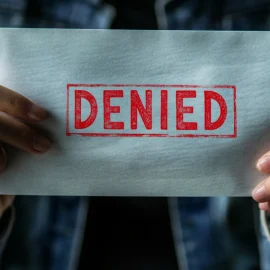

This article is an excerpt from the Shortform summary of "Understanding Michael Porter" by Joan Magretta. Shortform has the world's best summaries of books you should be reading.
Like this article? Sign up for a free trial here .
What is business continuity strategy, and does your business need it?
There are two sides to business continuity strategy; maintaining consistency, and leaving room to adapt. It deals with how to maintain your business success over the long term.
Business Continuity of Strategy
The last component of strategy is continuity. Companies need breathing room to hone their activities and develop competitive advantage over time. Strategy isn’t a stir fry, it’s a stew – it takes time for the flavors and textures to develop.
- The richly developed strategies of IKEA or Southwest took years, decades to hone.
- Strategies often begin with 2 or 3 essential choices, then adding additional activities to extend the fit.
Continuity strengthens a company’s position in three ways:
- Branding and customer relationships: customers will know what the company stands for, and what needs they can and can’t meet.
- Partners: suppliers, channels, and complements learn to contribute to a company’s advantage.
- Dell had suppliers co-locate warehouses nearby
- (Shortform example: Amazon works with manufacturers to repackage goods in shipping-friendly forms)
- Team and internal culture: hiring for cultural fit and training employees improves. People make better decisions that fit company strategy
It takes years to implement a strategy. Switching strategies too often is value destroying, causing whiplash in the org and dismantling of value chains.
Maintaining Strategy
Continuity doesn’t mean an organization should stand still. As long as there is stability in the core value proposition, there should be innovation in how it’s delivered.
First, companies must stay on the frontier of operational effectiveness. You must assimilate best practices that do not conflict with your strategy or cause negative trade-offs.
- BMW embraced OE improvements to decrease design time, but stopped short of steps that would remove its unique design language.
Second, you must change whenever there are ways to extend your value proposition or better ways to deliver it.
- Reuter started with spreading market information through pigeons, then moving onto telegraph and the Internet.
- Netflix began with direct to customer movie DVDs, then switched to Internet streaming as soon as it became feasible.
Adapting Strategy to Changes
Unlike what some argue, a rapidly changing environment is not an excuse to avoid strategy. Their flawed thinking goes: “Strategy requires a prediction of the future. I can’t predict the future. Therefore, I can’t commit to a strategy.” They try to stay flexible by avoiding commitment.
But flexibility never allows the company to stand for anything or become great at anything. The mass of competitors will yield more focused rivals with clear value propositions who will attract customers instead.
Says former Ford CEO Alan Mulally: “Strategy is about a point of view about the future and then making decisions based on that. The worst thing you can do is not have a point of view, and not make decisions.”
Great strategies are rarely built on a concrete prediction of the future. They’re just based on a broad sense of which customers and needs are going to be robust 5-10 years from now. Strategy is implicitly a bet that these needs, and the accompanying trade-offs, will be enduring.
- Southwest bet that people would continue to want low-cost convenient transportation.
- In-N-Out bet that people would continue to want simple fresh burgers and fries.
A strategy is a guiding force that shows you how to adapt to the new world. You know who you’re trying to serve, what needs you’re trying to meet, and your price – this filters what matters and makes priorities clearer.
- Without a strategy, a clear value prop, you don’t know which changes are relevant to your org, and you get distracted by every shiny object. It’s debilitating to embrace every new technology coming your way.
When Should Environmental Changes Prompt Strategy Changes?
- When changing customer needs mean a company’s core value proposition becomes obsolete.
- Blockbuster’s focus on physical stores faltered when customers were content browsing a catalog online and renting for cheaper prices.
- When innovation invalidates the trade-offs on which a strategy relies.
- Dell’s cost advantage was neutralized by the rise of Taiwanese Original Design Manufacturers, which let rivals outsource design and assembly to efficient producers.
- When a technological or managerial breakthrough trumps a company’s existing value proposition. A truly disruptive technology invalidates current value chains and makes it difficult for incumbents to match because of their existing assets.
- Kodak was disrupted by digital photography.
- (Shortform example: Google replaced physical Yellow Page books, which used to be delivered to people’s homes. Much of the publishing and delivery components of the Yellow Pages were invalidated by the Internet.)
Often, though, seemingly disruptive changes can actually be integrated into your value chain without meaningfully changing the industry structure. Many industries adopted the Internet, and the fundamental structure of the industry didn’t change.
Business continuity strategy is one essential part of a business plan. You need a business continuity strategy to plan a future for your business.

———End of Preview———
Like what you just read? Read the rest of the world's best summary of Joan Magretta's "Understanding Michael Porter" at Shortform .
Here's what you'll find in our full Understanding Michael Porter summary :
- How Porter's famous Five Forces help you analyze every industry
- How IKEA, Southwest Airlines, and Zara have ironclad, defensible strategies
- Why the best companies reject opportunities to focus on what they know






